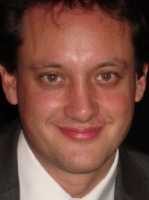06 Oct Digital Mobile Technology Gives Some Arm Function To Stroke Patients
MedicalResearch.com Interview with:
Dr Paul Bentley MA MRCP PhD
Clinical Senior Lecturer in Clinical Neuroscience
Honorary Consultant Neurologist
Neurology Dept
Imperial College NHS Healthcare Trust
Charing Cross Hospital
London
MedicalResearch.com: What is the background for this study? What are the main findings?
Response: gripAble was designed to help people with arm disability practise physiotherapy when a physiotherapist is not available, or in between physiotherapy sessions. We know that the amount of physiotherapy provision in the UK, after stroke or arm injury, is typically below that which is recommended by professional bodies. Furthermore, increasing research suggests that higher-intensity training can boost functional outcomes. The innovation was designed to help people with a range of disabilities including severe paralysis engage with computer games with their weak arm. At the same time its designed to be portable for use at home or in bed, and low-cost.
gripAble also enables remote measurement and monitoring of arm function, by setting users a series of calibrated tasks played out on the tablet screen. This way doctors and physiotherapists can assess the needs of a patient, and gain an idea of how well a patient is responding to home physiotherapy.
The study was designed to assess the proportion of stroke patients with arm weakness who could use gripAble in a meaningful manner. This was assessed by observing how accurately they could control a cursor or character on a standard PC tablet. The same subjects also tried to control the tablet using conventional means e.g. swiping a hand or finger.
The results showed that gripAble enables meaningful software interaction, and arm training, in ~50% more patients with arm disability than existing mobile-gaming methods (75 vs 45%). This difference was greatest amongst patients with severe arm paralysis, in whom 58% could control gripAble meaningfully, as opposed to 0% who could utilise standard control methods.
MedicalResearch.com: What should readers take away from your report?
Response: Mobile gaming and low-cost technological solutions are likely to play an increasing role in medical rehabilitation in the near future. Simple adaptations to existing commercial devices, in the way that gripAble enables tablet gaming, offers a widely available solution to inadequate physiotherapy provision.
MedicalResearch.com: What recommendations do you have for future research as a result of this study?
Response: Health economic considerations should prioritise research into affordable technological solutions, given the mounting challenge of disability in an ageing population. In the context of arm disability, other devices that enable different ranges of disability interaction, encouraging different types of real-life functional training need to be developed. For example, our group have recently experimented with devices that enable picking up objects of different sizes and shapes, mimicking money, keys, or door handles.
MedicalResearch.com: Is there anything else you would like to add?
Response: We are grateful for financial support provided by Imperial College Confidence in Concept scheme and NHS England.
MedicalResearch.com: Thank you for your contribution to the MedicalResearch.com community.
Citation:
Rinne P, Mace M, Nakornchai T, Zimmerman K, Fayer S, Sharma P, et al. Democratizing neurorehabilitation: how accessible are low-cost mobile-gaming technologies for self-rehabilitation of arm disability in stroke? PLoS ONE, October 2016
DOI: 10.1371/journal.pone.0163413
Note: Content is Not intended as medical advice.
Please consult your health care provider regarding your specific medical condition and questions.
More Medical Research Interviews on MedicalResearch.com
[wysija_form id=”5″]
Last Updated on October 6, 2016 by Marie Benz MD FAAD

